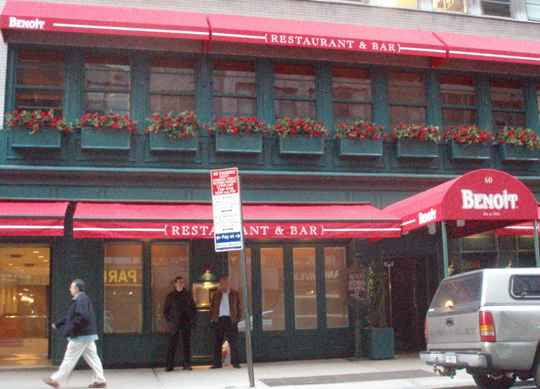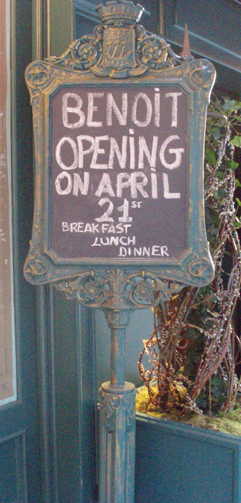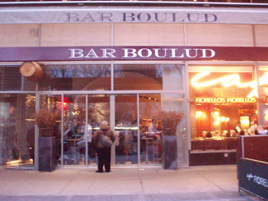How Dumb Can Ozersky Get?
 Monday, August 31, 2009 at 08:43AM
Monday, August 31, 2009 at 08:43AM Josh Ozersky, editor of The Feedbag, is often called on as expert du jour when the press need a quote and don’t know whom else to ask. But unless the topic is burgers, barbecue or steaks, he doesn’t really speak expertly.
The latest example comes in today’s New York Daily News article, “Recession forces ritzy restaurants such as Café des Artistes to close doors.” The reporters, Leah Chernikoff and Edgar Sandoval, don’t exactly cover themselves in glory. The story purports to be about “ritzy” restaurants killed by the recession, but several of those listed don’t fit that description. Elettaria wasn’t ritzy at all. LCB Brasserie closed before the economic downturn, and the restaurant that replaced it (Benoit) was practically the same genre. La Goulue closed due to a lease issue; its owner insists it will re-open nearby.
The reporters say that “512 [NYC] resetaurants have closed this past year.” But the vast majority, as in about 95%, aren’t “ritzy.” As far as I can tell, “ritzy” restaurants (however one defines that term) are closing in roughly the same percentage as the fraction of the market they occupy. No more, no less. Take a tour through Eater.com’s posts tagged “The Shutter,” and tell me how many of them are “ritzy” in the same sense as Café des Artistes. It’s a tiny number.
Café des Artistes closed, as far as I could tell, because the owner was 85, and as he was going to have to retire eventually, now was as good a time as any. [ETA: Oh, that and a greedy union.]
One doesn’t expect much nuance from Daily News staff writers, but from Ozersky one expects better:
The great fine-dining fuddy-duddy restaurants were already on the wane before the recession hit… Overwrought and overstaffed, they were lingering in their own twilight. Now the meteor has hit, and these places have all gone under… The old white tablecloth dinosaurs have been supplanted by friskier mammals.”
It’s usually a safe bet that when people use words like “fuddy-duddy” and “dinosaur,” it’s shorthand for “restaurants I don’t understand.” Now, I am not suggesting that the loss of Café des Artistes is any great culinary loss: my last meal there was a disaster. But it filled a legitimate niche, and some of the remaining examples of the genre are still very good, for what they are (Le Périgord, for instance).
If Ozersky’s point is that the narrow genre that Café des Artiste occupied (Classic Old French) is shrinking, that has been true for decades—not so much due to the recession, but because their clientele is aging and is not being replaced. But to Daily News readers, when “white tablecloth” and “dinosaur” are put in the same sentence, there is no distinction between Café des Artistes (which Ozersky hated) and Marea (which he loves). Both have white tablecloths and elegant service. And I’ll betcha Marea has far more staff than CdA did.
What, exactly, makes Café des Artistes “overwrought,” and not Le Bernardin? Obviously the latter restaurant is far better (and still thriving), but its style of service is much farther over the top than CdA ever was. If the word “overwrought” applies to the service at any restaurant, on what principled distinction could Ozersky apply it to CdA and not Le Bernardin? Or is it really just a lazy term used to disparage a genre he never appreciated?






